Public reception
The song was recorded with a vocal by Art Leonard [4] and released in July 1930 by Regal. Some of O'Hagan's verses were omitted. On the B-side was another cricket song, "Our Eleven", written by Jack Lumsdaine. [5] The sheet music was released at the same time, just as Bradman scored a triple-century in a Test match in England, and sold 40,000 copies in a few days. [6] A piano roll was also released that month, recorded by Laurel Pardey. [7]
The song quickly became popular and within a few weeks was being performed at community concerts around Australia. [8] When Bradman returned to his home town of Bowral in November 1930 after the triumphant tour of England, the band at the civic reception played "Our Don Bradman". [9]
The song was voted number one by teenage listeners of radio station 2UW in Sydney in 1967 after it was played as a joke for a listener who had sent it in. [10]

Sir Donald George Bradman, nicknamed "The Don", was an Australian international cricketer, widely acknowledged as the greatest batsman of all time. His cricketing successes have been claimed by Shane Warne, among others, to make Bradman the "greatest sportsperson" in history. Bradman's career Test batting average of 99.94 is considered by some to be the greatest achievement by any sportsman in any major sport.
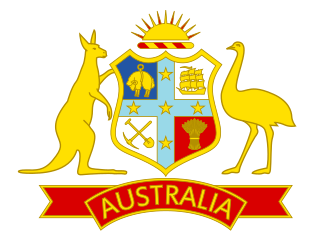
The Australia men's national cricket team represents Australia in men's international cricket. As the joint oldest team in Test cricket history, playing in the first ever Test match in 1877, the team also plays One-Day International (ODI) and Twenty20 International (T20I) cricket, participating in both the first ODI, against England in the 1970–71 season and the first T20I, against New Zealand in the 2004–05 season, winning both games. The team draws its players from teams playing in the Australian domestic competitions – the Sheffield Shield, the Australian domestic limited-overs cricket tournament and the Big Bash League. Australia are the current ICC World Test Championship and ICC Cricket World Cup champions. They are regarded as most successful cricket teams in the history of Cricket.

Phillip Andrew Hedley Adams, is an Australian humanist, social commentator, broadcaster, public intellectual and farmer. He hosts Late Night Live, an Australian Broadcasting Corporation (ABC) program on Radio National four nights a week. He also writes a weekly column for The Weekend Australian.
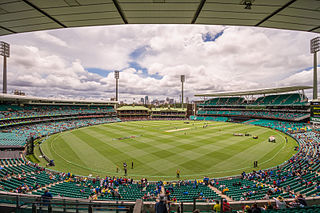
The Sydney Cricket Ground (SCG) is a sports stadium in the Moore Park suburb of Sydney, New South Wales, Australia. It is used for Test, One Day International and Twenty20 cricket, as well as, Australian rules football and occasionally for rugby league, rugby union and association football. It is the home ground for the New South Wales Blues cricket team, the Sydney Sixers of the Big Bash League and the Sydney Swans of the Australian Football League. It is owned and operated by Venues NSW, an agency of the Government of New South Wales who also hold responsibility for Stadium Australia and the Sydney Football Stadium.
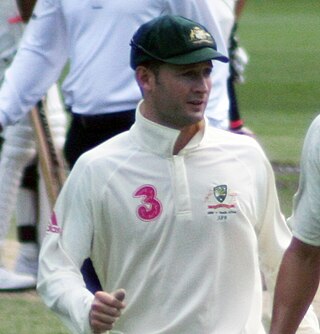
Michael John Clarke is an Australian former cricketer. He was captain of the Australian cricket team in both Test and One Day International (ODI) between 2011 and 2015, leading Australia to victory in the 2015 Cricket World Cup. He also served as captain of the Twenty20 International (T20I) side between 2007 and 2010. With his time representing Australia, Clarke won multiple ICC titles with the team: the 2007 Cricket World Cup, the 2015 Cricket World Cup which he was the winning captain, and the 2006 ICC Champions Trophy.

Cootamundra, nicknamed Coota, is a town in the South West Slopes region of New South Wales, Australia and within the Riverina. It is within the Cootamundra-Gundagai Regional Council. At the 2016 Census, Cootamundra had a population of 6,782. It is located on the Olympic Highway at the point where it crosses the Muttama Creek, between Junee and Cowra. Its railway station is on the Main Southern line, part of the Melbourne-to-Sydney line.
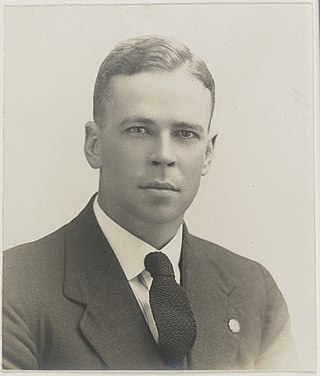
William Harold PonsfordMBE was an Australian cricketer. Usually playing as an opening batsman, he formed a successful and long-lived partnership opening the batting for Victoria and Australia with Bill Woodfull, his friend and state and national captain. Ponsford is the only player to twice break the world record for the highest individual score in first-class cricket; Ponsford and Brian Lara are the only cricketers to twice score 400 runs in an innings. Ponsford holds the Australian record for a partnership in Test cricket, set in 1934 in combination with Don Bradman —the man who broke many of Ponsford's other individual records. In fact, he along with Bradman set the record for the highest partnership ever for any wicket in Test cricket history when playing on away soil

Alan Falconer Kippax was a cricketer for New South Wales (NSW) and Australia. Regarded as one of the great stylists of Australian cricket during the era between the two World Wars, Kippax overcame a late start to Test cricket to become a regular in the Australian team between the 1928–29 and 1932–33 seasons. A middle-order batsman, he toured England twice, and at domestic level was a prolific scorer and a highly considered leader of NSW for eight years. To an extent, his Test figures did not correspond with his great success for NSW and he is best remembered for a performance in domestic cricket—a world record last wicket partnership, set during a Sheffield Shield match in 1928–29. His career was curtailed by the controversial Bodyline tactics employed by England on their 1932–33 tour of Australia; Kippax wrote a book denouncing the tactics after the series concluded.
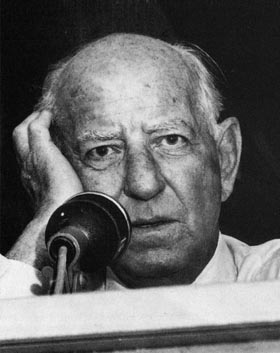
Alban George "Johnny" Moyes was a cricketer who played for South Australia and Victoria. Following his brief playing career, Moyes, a professional journalist, later gained greater fame as a writer and commentator on the game.

Archibald Jackson, occasionally known as Archibald Alexander Jackson, was an Australian international cricketer who played eight Test matches as a specialist batsman between 1929 and 1931. A teenage prodigy, he played first grade cricket at only 15 years of age and was selected for New South Wales at 17. In 1929, aged 19, Jackson made his Test debut against England, scoring 164 runs in the first innings to become the youngest player to score a Test century.
Roland John Perry OAM is an Australian author and historian. His work includes three works of fiction and more than twenty documentary films. His book Monash: The Outsider Who Won the War was awarded the Fellowship of Australian Writers' Melbourne University Publishing Award in 2004 and described as "a model of the biographer's art."

Ronald Arthur Hamence was a cricketer who played for South Australia and Australia. A short and compact right-handed batsman, Hamence excelled in getting forward to drive and had an array of attractive back foot strokes. Already the youngest Australian to play district cricket, he was also, from the death of Bill Brown in 2008 until his own death in 2010, the oldest surviving Australian Test cricketer.
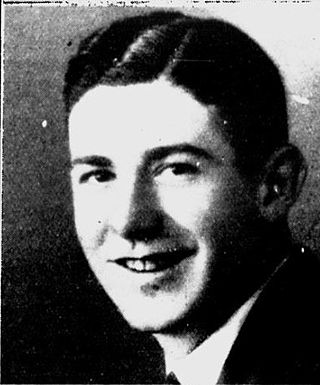
Neville Anthony Quinn was a cricketer who played in 12 Test matches for South Africa from 1929 to 1931–32.

The appearances of former Australian cricketer Don Bradman in popular culture are many and varied. As a player, he first came to prominence during the 1928/29 season. His record-breaking performances on the 1930 tour of England made him a national hero in Australia. Bradman was a private person who did not enjoy the adulation associated with his fame. In cricket, a batsman who enjoys an exceptional run of form over an extended period is sometimes called Bradmanesque.

Bradman Oval is a heritage-listed cricket ground in Glebe Street, Bowral in the southern highlands area of New South Wales, Australia. It was named after cricketer Don Bradman, who lived locally and played at the ground in the 1920s. His ashes are scattered on and near the Oval. It is also known as Glebe Park. It was added to the New South Wales State Heritage Register on 23 June 2000.
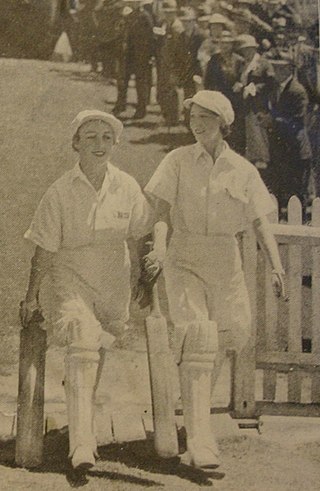
Hazel Doreen Pritchard was a cricketer who played for the Australia women's national cricket team between 1934 and 1937. She opened the batting for Australia in the first Women's Test match, against England on 28 December 1934. A right-handed batsman, she scored 340 runs in international matches, at an average of 28.33. In 2011, she was inducted into the Cricket New South Wales Hall of Fame.
Greta Bradman is an Australian operatic soprano.

James Searle was an Australian cricketer. He played nine first-class matches for New South Wales between 1888/89 and 1893/94.
Don Bradman (1908–2001) was an Australian cricketer who is widely acknowledged as the greatest batsman of all time.
















